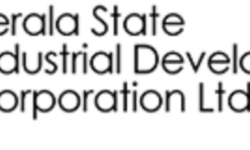MUMBAI:
The Indian consumer credit market continued to expand during the third quarter of 2018. Retail outstanding balances increased by 21% since last year and number of accounts rose by 28% in the same timeframe. These trends were revealed in the CYQ3 2018 TransUnion CIBIL Industry Insights Report, which further found that the increases in balances and accounts were similar as those seen last year in the same quarter when balances rose 22% and accounts grew by 23% on an annual basis.
“We are in the midst of a robust Indian consumer credit market expansion where we are seeing immense growth in both the number of accounts and balances for most major credit products, including credit cards and personal loans,” said Yogendra Singh, Vice President of Research and Consulting for TransUnion CIBIL.
“As we’ve observed in the past, the growth has been primarily driven by those consumers living in major Indian states. This quarter, we also noted that Millennals and Generation X consumers are driving much of this growth and comprise well over half of all accounts and balances.”
TransUnion CIBIL’s latest report found that consumers in the 30-49 years age group are a mainstay of the retail lending market. In CYQ3 2018, this age group comprised a majority of the total number of credit- active consumers (56%) and a higher percentage of total balances (60%), overshadowing the shares of all other age groups.
The majority share of this age group in the overall retail credit market is not surprising in light of their life stages. Many consumers in their 30s are starting and growing families, and need for credit to finance the purchase of vehicles and homes as well as household goods. Further, these consumers are at more mature career stages with income levels that can support taking on consumer debt. The good news in these findings is that these Gen X and older Millennial consumers are increasingly able to access new credit to support their demand and purchasing needs.
The report also noted that the youngest borrowers are slowly making inroads into the consumer credit market. The number of consumers carrying a credit balance in the 20-29 years age group (which includes Gen Z and the youngest Millennials) rose from 17.5% in CYQ3 2015 to 19.7% in CYQ3 2018.
“Though their share of overall credit balances rose marginally in this timeframe, it bodes well for the country to see more of these younger consumers participating in the Indian economy,” added Singh.
Demand for credit cards and personal loans remains high
While double-digit percentage account growth was observed for all major credit products, credit cards and personal loans both stood out because of the sheer volume of such accounts currently open. The number of credit card accounts increased by nearly 32% in the last year to 36.9 million in CYQ3 2018. Personal loan accounts rose to 15 million in CYQ3 2018 due to a 26% increase in the last year.
Loans against property (LAP), which constitute 1.6 million total accounts, increased by 33% in the last year. While the number of these loans in the marketplace is much smaller than for cards and personal loans, the average balance of these accounts makes this product significant in the retail lending landscape. Indian LAP borrowers held average balances of INR 3,493,000 in CYQ3 2018.
Comparatively, the average balance of loan size for personal loans per borrower was INR 252,000, and the average balance per credit card holder was INR 46,000.
Delinquency rates increased year-over-year for both home loans and credit cards by 22 and 28 basis points, respectively, to 1.73% and 1.78%. A more pronounced rise occurred for LAP, which increased 73 basis points year-over-year to 3.03% in CYQ3 2018. The rise in LAP balance-level delinquency rates is significant because of the much larger average balances for this loan type, and bears watching by lenders who are active in this segment.
“While India continues to be in growth mode, lenders must judiciously monitor their risk management processes. For instance, the number of loans against property has risen at a rapid rate. At the same time, delinquency rates for these loans have now crossed 3% for the first time in several years. Lenders must now determine if the rapid demand for these loans, which are an excellent revenue generator, outweighs the recent delinquency increases,” concluded Singh
“From a consumer perspective, it’s immensely important that borrowers understand the importance of continuing to make on-time payments. This is especially important for younger consumers, who are generally less experienced in managing debt and are still building their credit habits. These emerging consumers are beginning to play a larger role in the Indian economy, and their ability to access and successfully manage credit will be critical to the future growth and health of the economy.”




